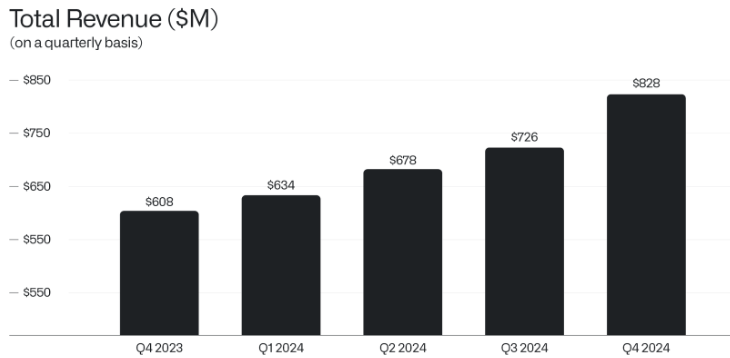Why betting against AI is a losing strategy
In light of recent developments with DeepSeek, we offer our perspective on the current state and likely future direction of AI development.
From Internet to Intelligent Applications
To understand the present landscape, there’s value in understanding how we got to this point. We take up the narrative around the advent of the internet.
The internet revolutionised access to both information and interpersonal connection, transcending the limitations of physical proximity. It enabled device connectivity without requiring face-to-face interaction.
The subsequent development of software and hardware, such as smartphones, further amplified the internet's utility. Software provides significant utility to people. Leveraging deductive logic, software allows users to input specific parameters and generate desired outputs. These outputs translate into tangible benefits, including time, cost, and administrative savings. Online banking applications provide a clear example: by inputting specific instructions, users can achieve desired outcomes, such as transferring funds, without visiting a physical bank.
Mobile hardware and connectivity significantly enhanced the consumer utility of the internet and software. The modern-day personal assistant is now your smartphone. Google developed an algorithm that enabled users to efficiently and accurately find desired information. Apple created applications that eliminated the need to visit physical stores like Blockbuster or CD shops. Uber significantly streamlined the process of ordering transportation. Amazon produced a system that provided shoppers with expanded product selection, bypassing the need to find parking and wait in checkout lines. All these applications, primarily utilising deductive logic, saved users time, effort, and money. Connectivity and logic fundamentally altered how we achieve many of our objectives. Software and logic allowed us to automate repetitive tasks that had fixed outputs for a given input.
The Expanding Utility of AI
What potential utility does artificial intelligence offer? AI empowers software in two key ways: (1) by utilising inductive logic, similar to how the human mind works, to provide answers based on a wider understanding than deductive logic allows; and (2) by generating creative responses. Deductive logic is limited to providing predetermined outputs for specific inputs. AI, conversely, enables software to generate creative and context-aware responses based on broader input data.
What is the effect of this shift? It enables software and applications to become significantly more useful than they are today. By understanding a greater degree of context, they can provide more effective answers and solutions. AI, trained on a comprehensive database, may provide more tailored and accurate answers to user queries than a traditional, deductive FAQ guide. A refrigerator is more helpful if it can tell you what you have left in it, what you’re missing, and what you can make for dinner. Email software is improved if it can proofread and generate initial drafts. Writing software is enhanced if it can write sections of the report for you. Travel booking software is more efficient if an AI agent can propose a personalised itinerary for you. Cancer diagnoses may be improved if the software can compare the current scan to a broad database of previous cause-effect scans as a double-check. Legal research would be more efficient if AI could analyse documents and answer specific questions. Advertising and marketing might be more efficient if companies like Kaltura can create tailored ads for each individual. If robots run factories, the cost of your Amazon delivery would likely decrease. These examples illustrate the potential of software that transcends the limitations of deductive logic and generates useful suggestions for users. It’s for this reason we surmise, that the CEO of Amazon recently stated that AI will reshape the majority of the software industry. If an existing company doesn’t build these more useful features, then someone else will.
If one needs a macro-type measure as to how seriously the world’s biggest companies are taking AI development, one need look not much further than the trajectory of Palantir’s sales growth.

The Competitive Imperative for AI Investment
Many commentators argue that AI is unsustainable as a trend because it generates negative ROI. We believe this argument is flawed and misses a crucial point. Current AI investment isn't solely driven by the prospect of future profits. Instead, we contend that the prevailing motivation is loss prevention. What do we mean by this?
A decision that incurs short-term costs can still represent a positive ROI even if it never directly generates profit. The insurance industry is built on this very premise. People pay premiums to mitigate potential future losses. Contrary to popular opinion, this is a perfectly rational behaviour.
A prime example of this dynamic is Google's implementation of AI overviews. Even though this costs the company more money in compute resources for no extra advertising revenue, it’s been forced to play defence against the likes of Perplexity and other AI search products.
Big Tech companies are fiercely competing to develop the most effective human-technology interface. The cost of losing this competition could be existential. As we've observed throughout history, institutional survival is a powerful driving force. If one company doesn’t integrate that useful feature into their software, then another company likely will.
Big Tech’s Relentless AI Expansion
It’s for these reasons that Big Tech is investing so heavily into AI and data centre construction. As has become clear, DeepSeek does not alter this dynamic. Despite witnessing DeepSeek's new models and capabilities, Google, Amazon, Microsoft, and Meta have reaffirmed their plans to increase capital expenditure in 2025 by approximately 50%. Google’s behaviour is particularly noteworthy, given that its AI ecosystem is much more efficient than DeepSeek’s, and it operates a more capable model at a lower cost. Yet, Google's capital expenditure plans remain unchanged.
Following DeepSeek's reasoning model release, we examined whether Big Tech’s 'fungible' compute resources – easily repurposed assets – could shift from training to inference. If these models required less computing power for training, and inference didn't immediately come online (due to application development timelines), perhaps the largest AI infrastructure spenders would moderate their growth rates. However, this line of thinking is flawed for two reasons. First, if Google, already possessing the industry's most efficient models, increases its AI capital expenditure by 50%, its competitors have no choice but to follow suit. Second, these companies are now beginning to train their models on video data (as evidenced by recent licensing agreements between Curiosity Media and multiple hyperscalers for its 300,000 hours of video content).
The Future of AI and Compute Demand
Stepping back to consider the broader context can clarify our current position in AI development. Model developers will relentlessly pursue the goal of general artificial intelligence because of the high stakes involved. However, a growing number of applications will drive increased per-capita compute demand.
Will people allocate a portion of their income to this compute power? We believe that as applications and software improve with time, they will. For instance, we’re already witnessing significant adoption of enhanced search and research applications with embedded AI. ChatGPT boasts 180 million active consumers, while Meta has billions of daily active users. This larger user base translates to a potentially greater advertising revenue opportunity. There are billions of people who use search multiple times every day because of its utility. An improved search product alone will likely drive up computing resources considerably.
We believe it is plausible that, in the future, there could be one GPU for every four people in the developed world. Future applications in search, autonomous vehicles and robotics are likely to increase our average per-capita inference load. Currently, there are perhaps somewhere between 10 and 20 million advanced GPUs installed.
The race to create an all-in-one AI assistant that surpasses the capabilities of our current smartphones is underway. Given the potential rewards, we believe we are still in the early stages of the AI trend. When the internet was first introduced in the 1990s, how many people could have foreseen its full utility as we experience it today?
3 topics
1 stock mentioned

